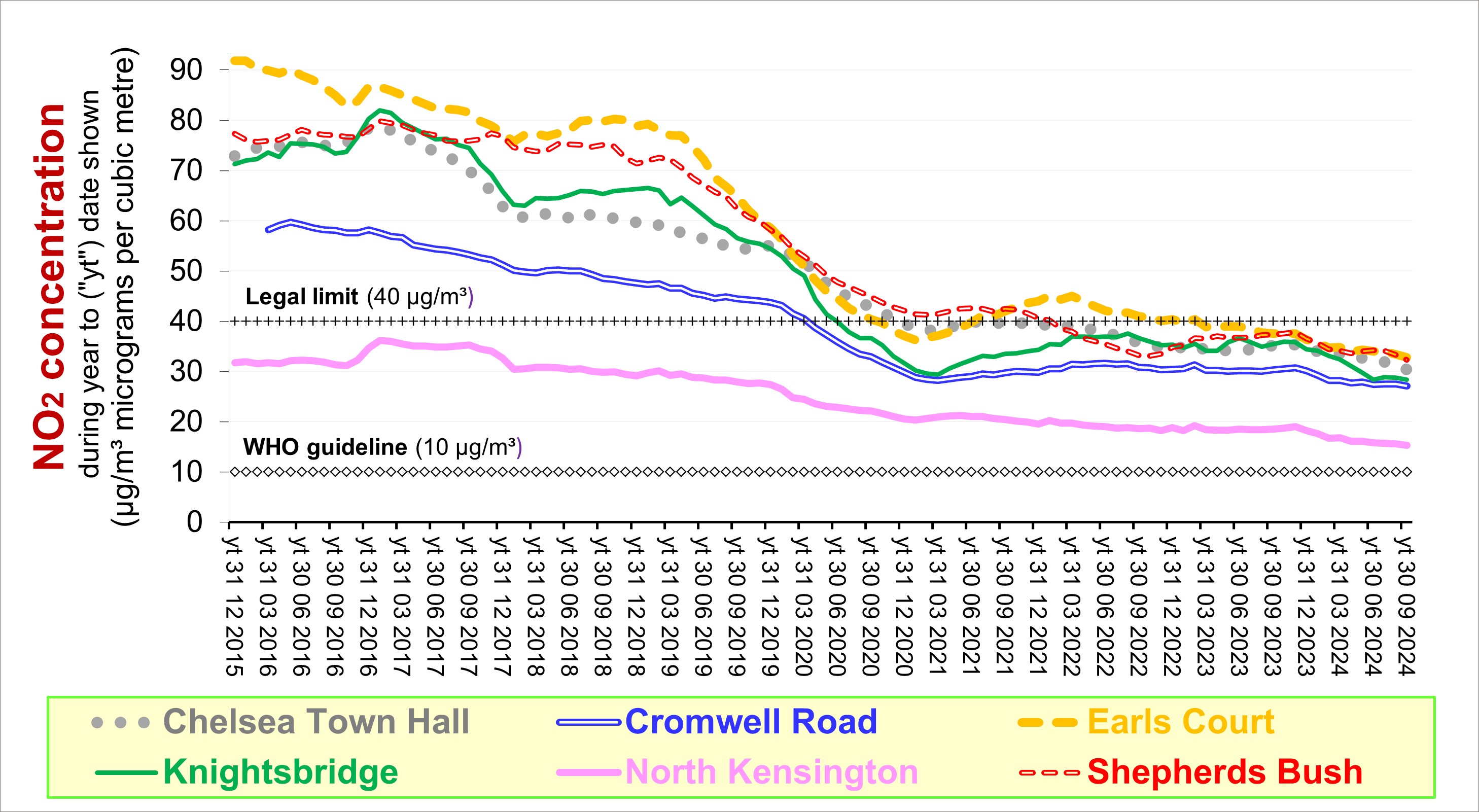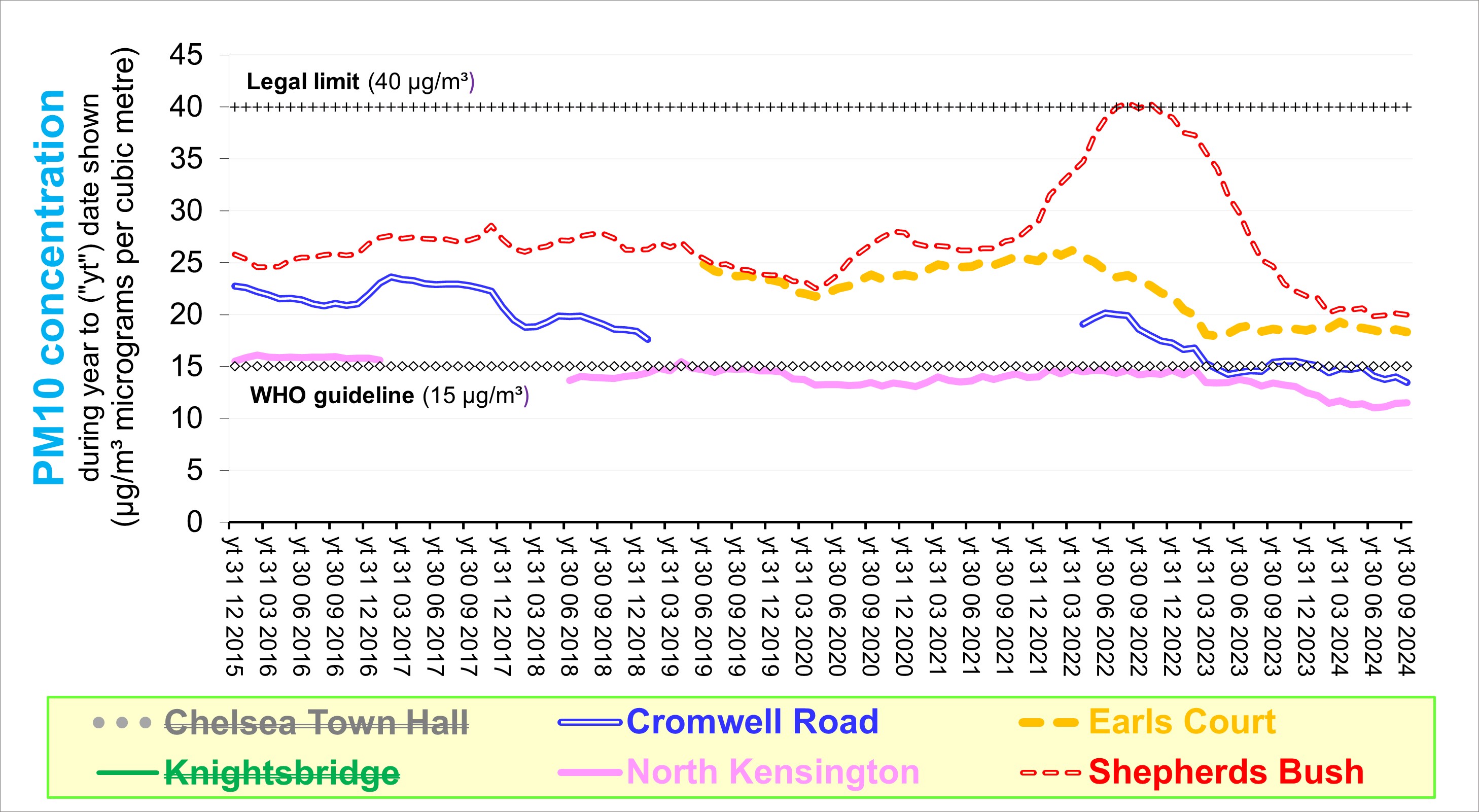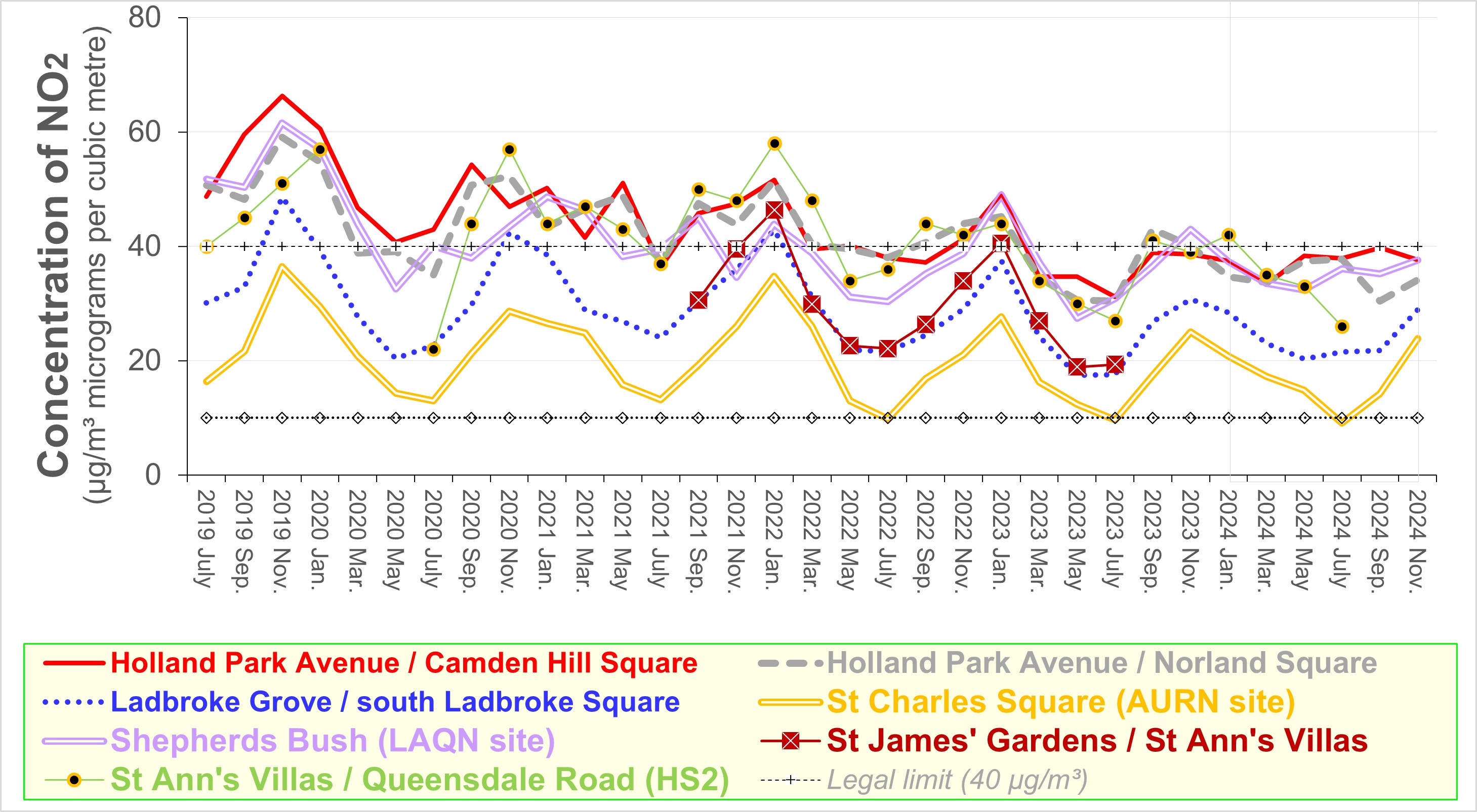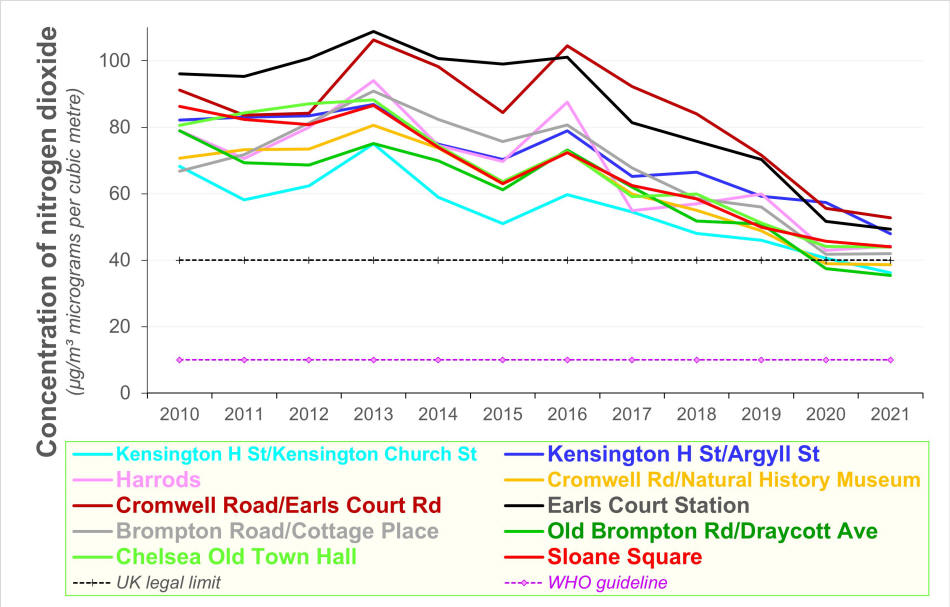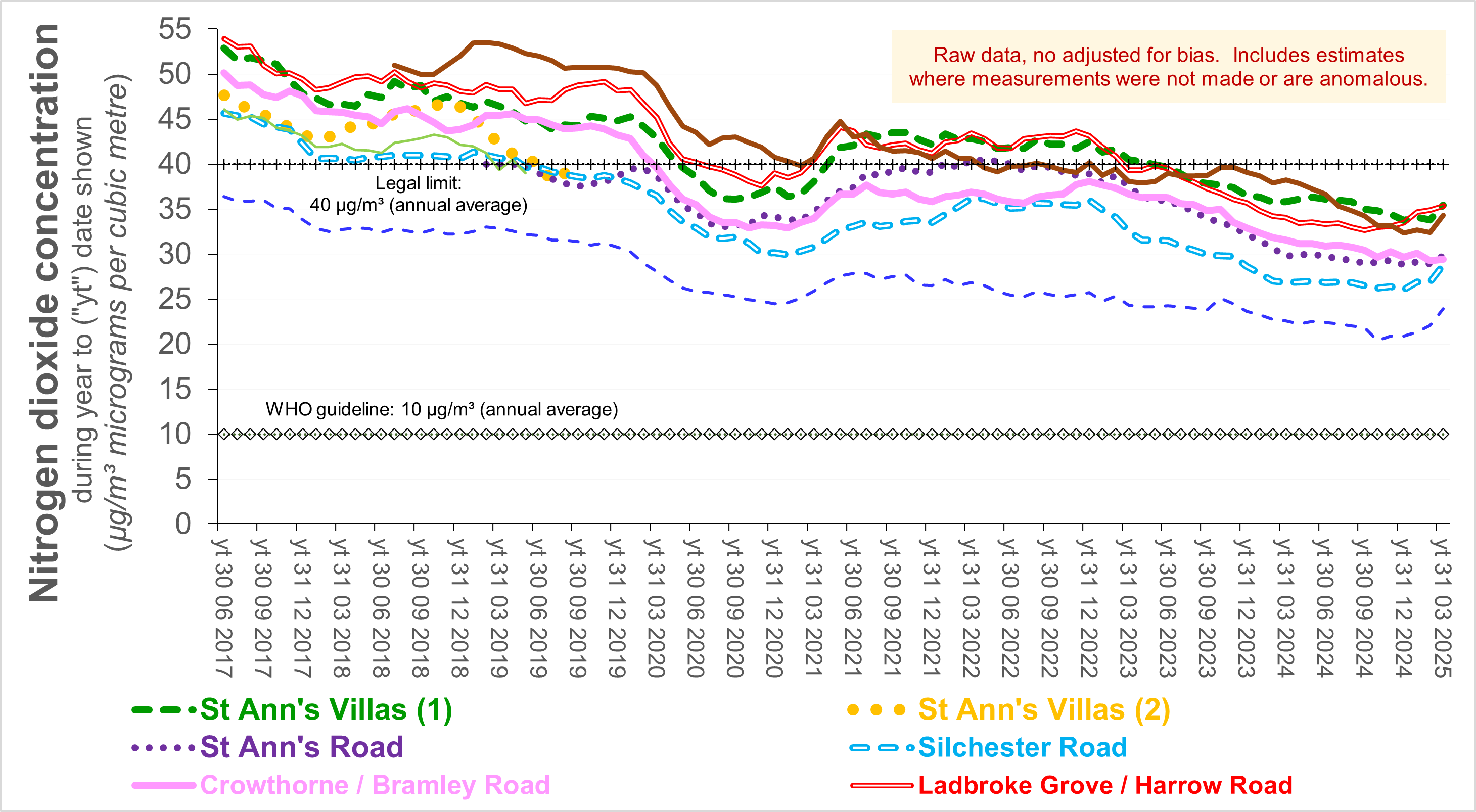|
AIR QUALITY MATTERS |
|
Royal Borough of Kensington and Chelsea |
|
|
|
The following three charts present the concentrations of NO2, PM10 and PM2.5 as reported contiuously at reference sites in this borough and nearby, doing so as annual averages for the average of each consecutive month. The source of this data is Air Quality England (ratified until 31 12 2024 or later).
"North Kensington" is classified as an "urban background", where there is little traffic and industry. The NO2 chart illustrates the improvement since introducing the ULEZ. The improvement attributabe to expanding both the LEZ and the ULEZ is masked by the impact of covid-related lockdowns. Construction works adjacent the Shepherds Bush monitoring device explain the 2022 peak in PM10 concentrations at that site. Data reported for some other continuous monitoring devices by the Council prior to 2023 was clearly been spurious. Click the following names for information concerning NO2 concentrations in those wards: The following chart illustrates trends in concentration of NO2 every two months in the vicinity of Holland Park Avenue - largely ignored by RBKC despite it being a major arterial road and the subject of proposed cycleway which aroused controversy.
Nitrogen dioxide concentrations along Kensington High Street (based on Air Quality Annual Status Report for 2021 and a Freedom of Information request; raw data not adjusted for bias) 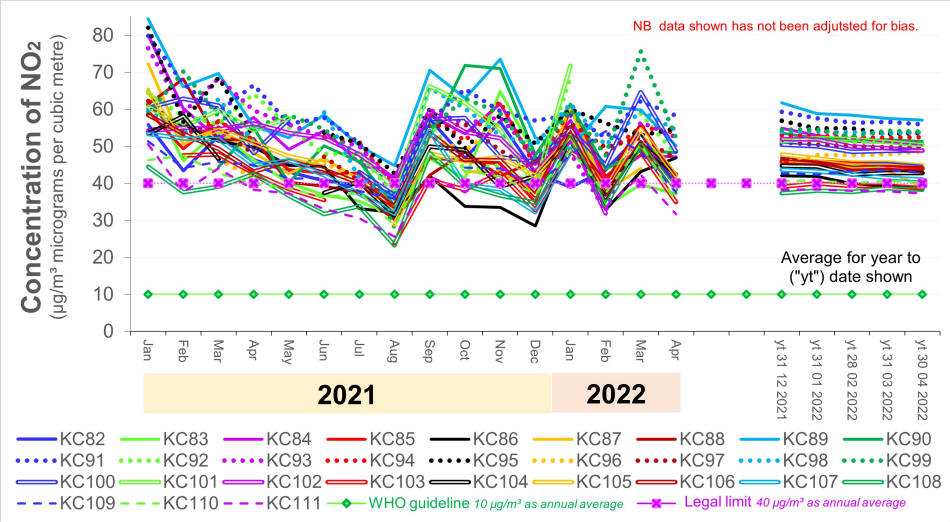 Multiplying the 2021 data shown above by 0.83 (the bias adjustment factor adopted by RBKC council) the right hand of the chart suggests that, in 2021, air quality along Kensington High Street was illegal for much of its length, 12 years after the deadline for compliance. As a proxy for progress towards net zero, this ominously reflects disregard for public interest. (NO2 in urban areas derives primarily from combustion of diesel and, for central heating & hot water, methane.)
Concentration of NO2 at eastern end of Kensington High Street
Prior to 2023, indicative data for some continuous monitoring devices reported by RBKC (replicated by airqualityengland.co.uk) was clearly spurious. The following chart shows how the annual average concentration of NO2 changed between 2010 and 2021 at prominent sites in the Royal Borough of Kensington and Chelsea (- the data derive from monthly measurements by diffusion tubes):
The data above indicate that NO2 concentrations continue to exceed the legal limit at almost all the sites shown. The legal limit (40 micrograms per cubic metre) should have been achieved by 2010. The legal limit is four times greater than the World Health Orgnisation guideline. The improvement since 2019 is attributable to the ULEZ (and the LEZ and their extensions).
Trends in NO2
concentration measured by
HS2 using diffusion tubes are shown
below.
Some years ago, research by Imperial College [see / listen from minute 15:10] indicated that NO2 concentrations are unlikely to meet that requirement, particularly along those busy streets (and in their neighbourhood), even when the proposed Ultra Low Emission Zone was scheduled to be fully implemented across London.
|
|
For further information, please contact: info@airqualitymatters.uk |
| Back |
|
|
